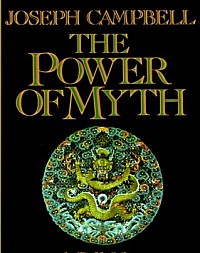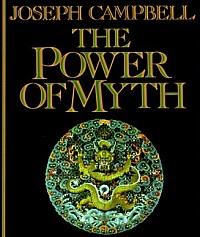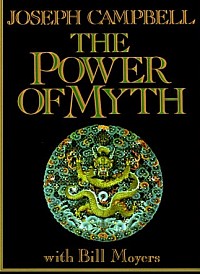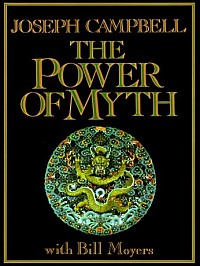JEDIISM BLOG
Exercise 4, Lesson 1; Section 4: Sacrifice and Bliss (12/05/12)
The first section speaks of the idea of a sacred place and its importance. In ancient indigenous cultures the whole world was seen as a sacred place. Every leaf, every grain of sand, and every drop of water were sacred and treated with reverence.
The idea of a sacred place can be seen in many primitive cultures and is defined as: A place where you can go, even if only in your head, where you aren’t accountable to anyone but yourself. This sacred place is somewhere you can relax and “see the big picture”, and allows you to experience bliss in the same way that the ancients did when viewing the whole world as sacred.
In primitive cultures the environment informed the myths: As the human animal evolved into planter societies instead of hunter societies, the Seed became the symbol of life and death.
With this change from the animal going to the plant as the central mythological image, comes the idea of death “not being death”, a sort of “immortality”, in that once you kill an animal that animal is gone forever, as opposed to this; the dominant motif of the plant culture is that the plant took over the image of the dead chopped up body (previously done through actual human sacrifice) going back into the earth only to be “reborn” the next season.
Like in previous sections Campbell speaks about these motifs popping up in different cultures separated by vast continents or oceans, through either diffusion of ideas-Being the myths of fertilization travels with the religious traditions as it spreads across continents, or the idea that these myths-these ideas- are so prevalent because regardless of distances, all human beings/cultures psychologically speaking are the same, thus similar cultures that place value on similar ideals and having similar needs of the land (hunter/gatherer societies) would inevitably mythologize their lands the same way.
This sacrifice idea leading to bliss can be seen symbolically today through the act of communion; the idea that by eating this bread and drinking this wine blessed by the priest to symbolize human flesh and blood of Jesus Christ, cleanses your spirit and brings it closer to God-Closer to bliss.
Another ancient and direct analogy/myth that shows sacrifice leading towards bliss still exists in today’s culture. Not just through the constant reimagining of the crucifixion of Christ but also through our records and re-emergence of pre-Christian theology; Which is the universal idea that every generation has to die in order for the new generation to come.
Reproduction and creation of the next generation symbolically, as well as perhaps psychologically, ends your life- limiting freedoms, choices, and diminishing “pathways” in life. Your previous life is sacrificed in order for this new life –this new generation- to grow, learn, and search for your own bliss.
In my personal opinion-while I am not a father-I don’t think people mourn this “loss” of their old life. While the old life, with its freedoms and limitless potentials is cast away and this new paternal/maternal life- full of responsibilities and pressures, takes its place, I feel the spiritual and emotional benefits from raising a child; showing it love and being loved unconditionally by this child; made of you and your partners own flesh, more then makes up for any “loss” of independence or freedom, etc. and can, in fact, lead to a wonderful universal type of bliss through this petty sacrifice.
Campbell goes on to describe the “Green Knight” myth; which teaches that the realization of your bliss; your true being- comes when you have put aside what he called “The passing moment” with its terrors and its temptations and its “statements of requirements of life”: the thought that you should live a certain way, and when you realize you should follow what ever your idea of bliss is and live your life to the fullest.
Campbell speaks of the idea though out the next section on this idea of knowing your bliss, what will bring you happiness, as well as the three basic terms that bring you to this symbolic “Jumping off” point in your search; the terms being: “Sat”, “Chit” and “Ananda.”
“Sat” is defined as “being”; “Chit” is defined as “Full consciousness”, and “Ananda” is defined as “Rapture”, and by meditating on these principle, with a clear view of what your rapture is, you can have it lead you to your being, and your full consciousness, which is a state of Bliss as well.
“Follow your bliss, and don’t be afraid . . .” will lead to a constant state of joy/inner contentment in all parts of life. This is the greatest advice, in my opinion, because it will help your life be less problematic, it can cultivate inner peace, and identifying and following your bliss can lead to an inner balance within this chaotic world of ours.
Exercise 4: Power of myth, section 3 : The first storytellers. ( 3/12/12)
This section talks about the various myths of primitive man and how these myths originated from concept to folklore, as a way to bring harmony and understanding to our primitive ancestors.
Myths teach us about ourselves, every chapter speaks of this in various ways, this chapter seems to focus on primitive man and theories on origins of mythological ideas.
I personally liked the idea of the origin of the " father" figure coming from these rituals of reverence and respect to the animals as bringers of life, sustenance, and "gifts." As well as, when Joseph Campbell talks about primitive man having the killed animal, in this case a mountain bear, as an honored guest in the feast of his flesh, laying the ground work for our modern day ritual of prayer before meals, except instead of giving thanks to a juedo-Christian deity or pagan God, primitive man gave thanks to the " mountain God" and the specific animal spirit. I, as a pagan, love this image as an origin to paganism practices I have studied for the past decade.
As a male in today's modern society I recognize that we have lost the rituals ( defined as " an enactment of a myth) that were so prevalent in primitive cultures. A long time ago males of a cetain age would go out into the wilderness and " prove their right to be a man" -to kill a dangerous animal, survive harsh environments, or any other test of physical strength or mental will to survive. We've lost that in today's society.
On the other hand I love the idea of today's myth makers being the artists or the poets being today's shamans because the artists function is to mytholize the environment in which their society exists, thus keeping the idea of mythology alive.
The chapter ends with the shaman ritual of " black elk" having a great vision of the ruination of his tribe, and how by having that vision he, like other " prophets" or storytellers, became enlightened. Similar to Buddha, in that in one way or another most every cultural " awakening" comes on suddenly as an awe inspiring moment of light- the realization and acceptance of being part of the planet while also being one with ourselves.( " You are the central mountain, and the central mountain is everywhere.")
I feel like that search to be one with everyone, to be connected to your family or " tribe" is a universal search that spans all cultures, faiths, and time periods, and is in a way more important for today's culture because we have lost our myths or our appreciation for ancient mythology, and by doing so, risk losing our way as a culture and as a society.
Exercise 4 power of myth ch.2: The journey inward (2/25/12)
This spoke of many inward persuits. The idea that you can learn a great deal about yourself by studying the imagery from dreams. As well as the teachings of realizing that we must look inward to discover ourselves.
The chapter speaks of the use of myth as a way to experience the world, that is rooted in our collective unconscious, and is necessary as a way to open our minds to introspective thinking as a way to find transcendence.
We must become one with our world in that we must look within ourselves and our collective mythologies in order to have a personal relationship with God and our cultural mythological teachings.
By looking in ourselves and finding a personal connection to "God" we can find eternity in the here and now, not as a "heaven" or a "nirvana" but is defined as "...unending delight in the beautific vision of God. But the experience of eternity right here and now in all things whether thought of as good or as evil is the function of life."
I believe one can find solace within ourselves through meditation and ethical behavior, so I agree with Joseph Campbell.
Exercise 4 "Power of Myth" section One: Myths and the Modern World
Written on July 28th 2011
What struck me throughout this chapter was how prevalent mythological symbols and ideas or used in our society.
As a former Wiccan priest and a student of theology I am familiar with the use of symbols and allegory in order to teach benefits of an ideology. So uses of the star of David/ Solomon’s Seal as a sigil/talisman in order to trap “monsters and giants” is a very familiar concept in early mythology and symbolism that I am aware of.
I enjoyed how Campbell ties in the idea that we have to “get back into accord with the wisdom of nature and realize again our “. . .Brotherhood with the animals and with the water and the sea. . . “ Harking back to the earliest spiritual beliefs of paying respect to Mother Earth in our everyday life.
I agree with Campbell in that “. . .The only worthy myths to think about are ones that view the planet as a whole organism, not just a city, or the people, but as a whole living breathing planet.” If we as a society are able to do this I feel and hope that we may even be able to live happier lives as not just individuals but as Americans, or simply as Earthlings.




